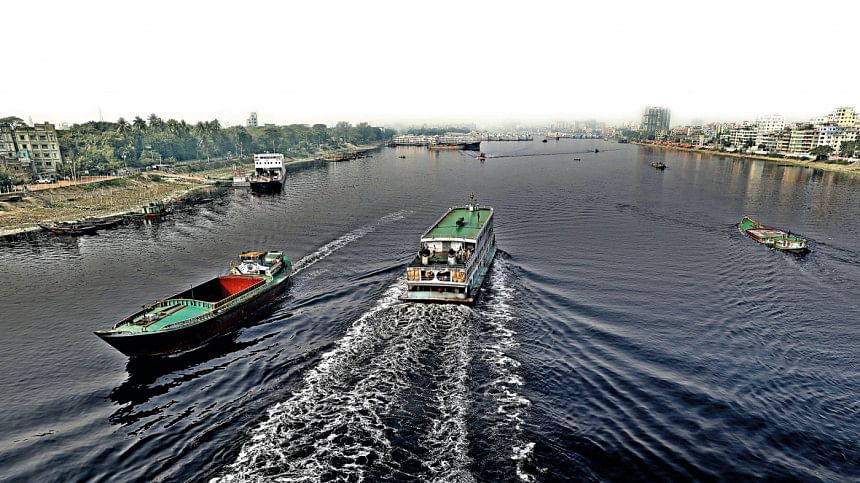Reimagining the urban environment with rivers

What good is a river to a city? Imagine strolling along the riverbanks on a lazy afternoon or just returning home from work. The picturesque sight that a river offers to city dwellers has its own charm. A river, as they say, has something to offer everyone.
Bangladesh is widely known as a river-borne country, with as many as 700 or more rivers listed in various archives, according to Banglapedia. Over the years, city dwellers have almost forgotten what urban life is like in a riverine country. Names like Buriganga or Shitalakhya don't positively resonate with us, thanks to pollution and encroachment. A 2019 report by the Water Development Board documented the names of 406 rivers. The curious case of missing rivers is not a mystery, due to open encroachment, pollution, erosion, and the eventual death of hundreds of rivers.
Architect and environmental activist Iqbal Habib said most major cities in the country originated from one or multiple rivers. "Apart from Dhaka, other cities or towns like Mymensingh, Cumilla, Rangpur, Sylhet, and Munshiganj were also heavily dependent on the rivers they originated from. Over time, through rapid unplanned urbanization and the expansion of roads and railways, the vast riverine network of canals and smaller water bodies started to be neglected and pushed to the verge of death by pollution," said Habib.
According to the Rivers and Delta Research Centre (RDRC), at least 56 rivers flowing through different parts of the country suffer from "extreme pollution" during lean periods when the natural flows of rivers are at their lowest. Habib said the construction of dams to the west end of the capital and unplanned urbanization on the eastern front are responsible for the death of rivers like the Buriganga, Dhaleshwari, and Bangshi. "WASA and the city authorities are also responsible for this. There is no proper waste management system except in Pagla and Rampura for the wastes to be processed before they go into the river," he added.
Reimagining the chaotic traffic situation in cities like Dhaka could greatly benefit from conserving our rivers and using them properly. Take the Hatirjheel water taxi service, for example. The service is available at five locations in the capital and operates from 6:30 AM to 10 AM, providing hassle-free transportation with a scenic view. "I was directly involved with the Hatirjheel project, which came into being after five years of environmentalist movement. After the completion of the Hatirjheel project in 2010, there was genuine reason for hope for us to recover the remaining canals and the old riverine network for the capital," said Habib.
"However, we could not maintain the progress. The greed and profit-centric approach of those in authority are responsible for that. The city authorities have been unable to come up with a master plan for river conservation in the last three and a half years," he added.
It's not just the economic benefits we are missing out on by letting our urban rivers rot. Rivers also impact local climate patterns. Rivers and related natural spaces help to cool the surrounding area, reducing the effects of urban heat islands. In another sense, rivers have a life of their own that adds vibrancy to the city they surround. The pollution and death of rivers in urban spaces come at the cost of the connection between the residents and the rivers, according to Habib.
"I still believe that reimagining urban life with rivers is a possibility. We have been fighting for this for the last 35 years. We need strong political will to make this happen. We owe it to the next generation," said Habib.

 For all latest news, follow The Daily Star's Google News channel.
For all latest news, follow The Daily Star's Google News channel. 



Comments